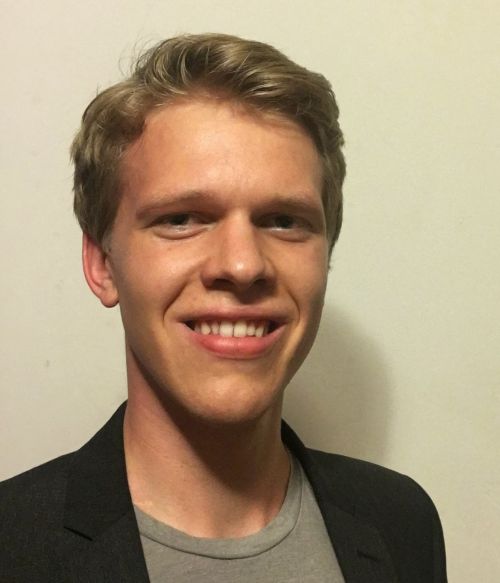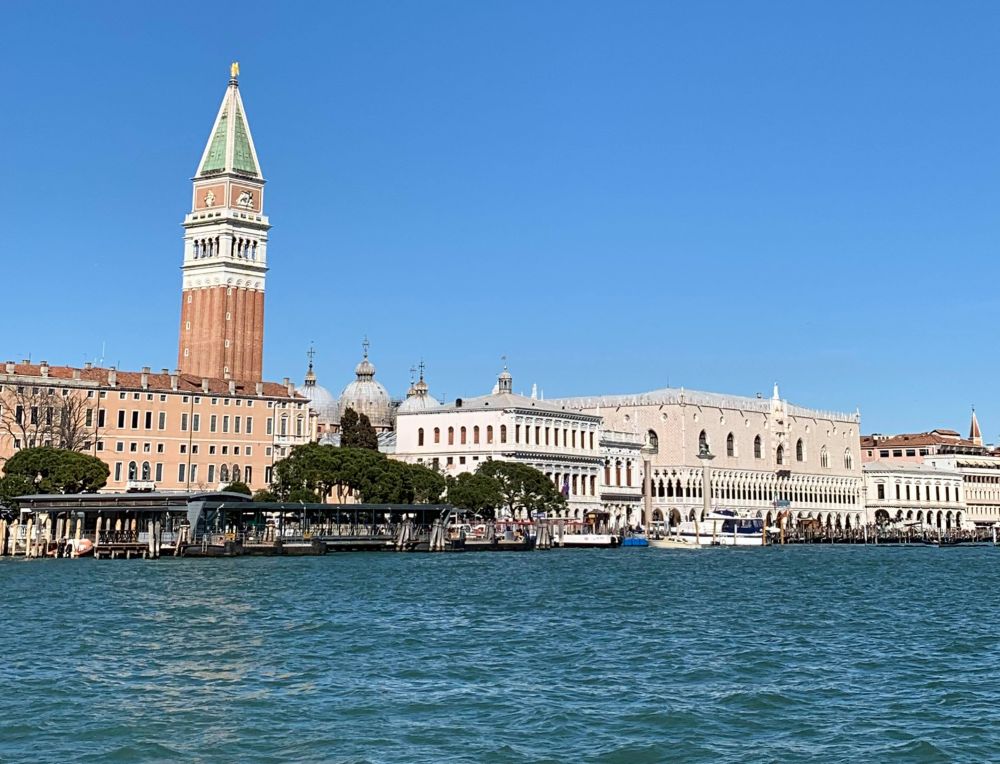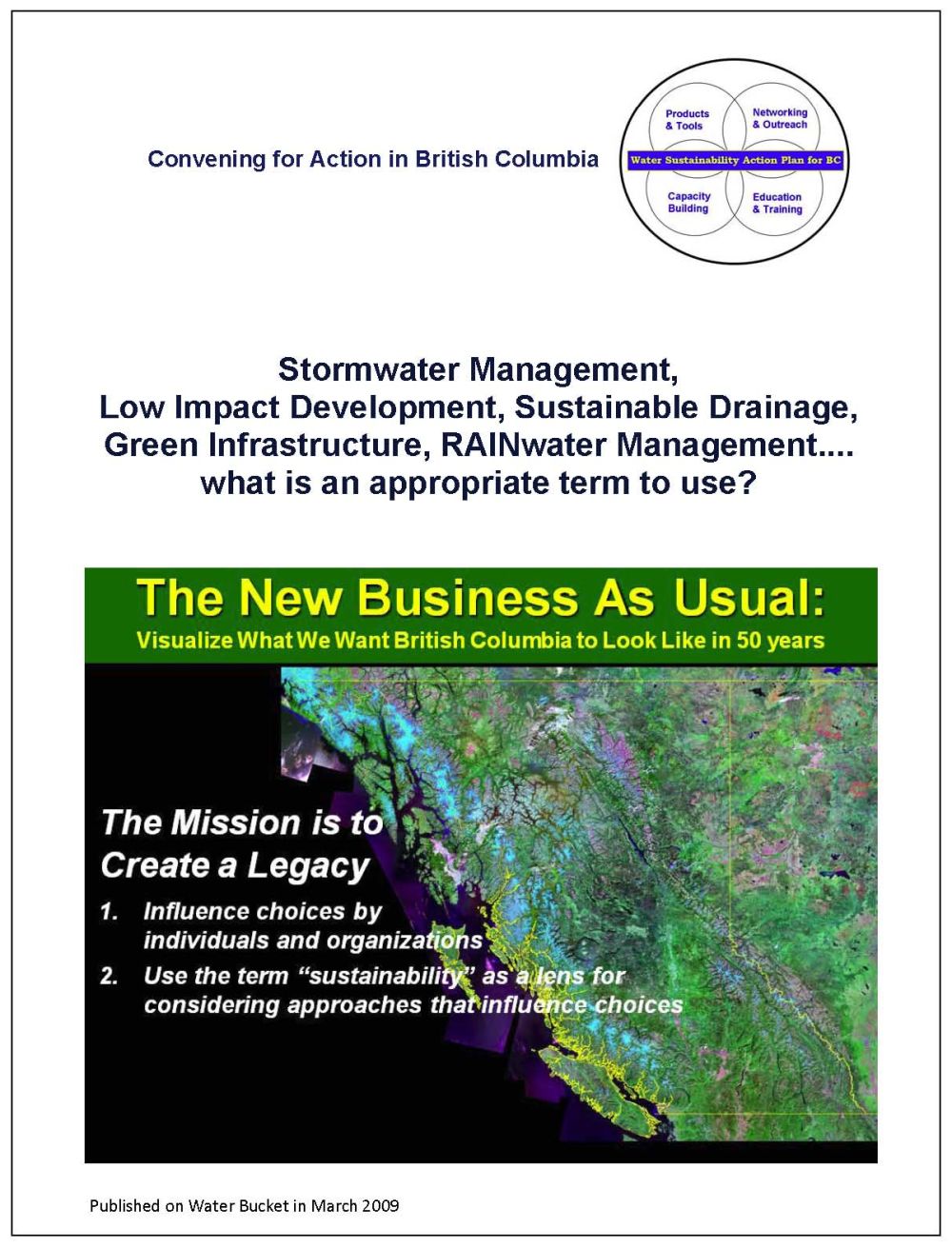USE PLAIN LANGUAGE: “Words like ‘stormwater’, ‘rainwater’ and ‘drainage’ can have such powerful unconscious effects on how you interpret the discussions and they can mean different things to different stakeholders in the system,” stated Charles Axelsson, PhD candidate, University of Venice (January 2021)
Note to Reader:
Waterbucket eNews celebrates the commitment, hard work and perseverance of individuals who strive to make a difference for the common good. Periodically, we feature individuals outside British Columbia. Their perspectives provide helpful context for what we are doing in British Columbia.
This edition features the story of Charles Axelsson and his doctoral research at the University of Venice. His PhD thesis is Adaptation through Policy: Climate Change induced Heavy Rainfall Events and Flash Flooding. By focusing on Metro Vancouver, New York City, Auckland, Sydney, Copenhagen, and Amsterdam he plans to capture a global picture of rainwater management and green infrastructure policy.

Venice sunset (photo credit: Charles Axelsson)
EDITOR’S CONTEXT:
 “In mid-December, Charles Axelsson reached out to me with a request for input to his global survey on stormwater management policy. This started a conversation that resulted in me connecting Charles with various local government leaders in the Metro Vancouver region. What aspect would make your research compelling for a BC audience, and what is your story behind the story, I queried Charles during a Zoom session,” stated Kim Stephens, Waterbucket eNews Editor and Executive Director, Partnership for Water Sustainability in British Columbia.
“In mid-December, Charles Axelsson reached out to me with a request for input to his global survey on stormwater management policy. This started a conversation that resulted in me connecting Charles with various local government leaders in the Metro Vancouver region. What aspect would make your research compelling for a BC audience, and what is your story behind the story, I queried Charles during a Zoom session,” stated Kim Stephens, Waterbucket eNews Editor and Executive Director, Partnership for Water Sustainability in British Columbia.
“As we talked, a 3-part storyline emerged: the childhood experience that motivates his research, the inherent weakness in science communication, and his perception of the BC scene. While all six cities recognize that green infrastructure is a foundation piece for climate change adaptation, what makes BC stand out is the underlying stewardship ethic. This drives a science-based approach to ‘designing with nature’.”
“The aspect that caught my attention is that Charles began his PhD program with a narrow technical focus on macro-plastics in the marine environment. He then shifted his focus inland and became interested in the rainfall events themselves. His research led him to look at drainage-related issues through a social science lens.”
“Charles is examining the policies and infrastructure developed cities utilize to adapt their drainage conveyance systems, as well as the criteria used in making their decisions. He is investigating these topics through the lenses of research, government and advocacy. In December, Charles asked individuals in each of the six cities to complete an online survey. Detailed in scope, the survey has generated a database for analysis and comparison.”
“When Charles stated that what matters most is being able to present science-based knowledge in a way that is readily understood by any audience, the thought resonated with me. Communicating with plain language is a guiding principle for those involved with the Partnership for Water Sustainability. Viewed in a social context, his global research in understanding the approaches to communication in six regions is potentially quite powerful. And that is the value in sharing his story with you the reader.”
QUOTABLE QUOTE – After completing this article,
Charles Axelsson observed that:
 “My discussions with Kim Stephens on the terms of management have helped me to re-evaluate how I discuss my own research,” stated Charles Axelsson. “I was taking some of the terminology for granted as it is repeated in the literature time and time again but words like ‘stormwater’, ‘rainwater’ and ‘drainage’ can have such powerful unconscious effects on how you interpret the discussions and they can mean different things to different stakeholders in the system. These terminology choices ultimately have a large effect in science communication and the message you intend to convey. I find these differences interesting and yet more proof that I love science communication!”
“My discussions with Kim Stephens on the terms of management have helped me to re-evaluate how I discuss my own research,” stated Charles Axelsson. “I was taking some of the terminology for granted as it is repeated in the literature time and time again but words like ‘stormwater’, ‘rainwater’ and ‘drainage’ can have such powerful unconscious effects on how you interpret the discussions and they can mean different things to different stakeholders in the system. These terminology choices ultimately have a large effect in science communication and the message you intend to convey. I find these differences interesting and yet more proof that I love science communication!”
To Learn More:

Macro-plastics entering the storm drain system in NYC (photo credit: Charles Axelsson)

Where it all began for Charles Axelsson. NYC combined sewer overflow (CSO) to the East River
(photo credit: Charles Axelsson)
Climate Adaptation / Use Plain Language
Charles Axelsson is a final year PhD candidate at Ca’ Foscari University of Venice studying the Science and Management of Climate Change. Originally from Iceland, he grew up in NYC and Washington, D.C. before pursuing his undergraduate degree in Geography (BSc) at University College London. He continued with his masters in London in Environmental Technology (MSc) at Imperial College London.
“As a geographer researching urban environments, I really enjoy focusing on where scientific environmental research meets urban policy. I hope to continue this style of research as 2020 has only demonstrated further how important understanding science is to effective policy decisions,” stated Charles Axelsson.
Research Focus
In November 2020, the first set of findings from his doctoral work were published in the Journal of Environmental Planning and Management. In the journal paper, Charles and his co-authors looked at the foundations of stormwater and rainwater policy in six case cities – New York City, Auckland, Sydney, Copenhagen, and Amsterdam.
They present the state of urban adaptation to climate change induced pluvial flooding through cloudburst and rainfall events in the six cities. They discuss the management narrative of each case-study city in combating flooding events within the context of climate adaptation using their guiding policy documents.
Initial Findings
“City leaders and planners can use policy to begin mitigating the effects of pluvial flooding and enhance the sustainability of the urban environment,” states Charles Axelsson.
“NYC, Vancouver, Sydney, Auckland, Copenhagen and Amsterdam present differing narratives toward pluvial flooding. The European cities craft a unique policy narrative of being innovators and pioneers in rainfall management. They take a very intensive approach to stormwater management.”
“The North American cities do not present a unified vision of stormwater management. Alongside efforts to incorporate sustainable and environmental management into the stormwater management network, NYC remains a large city of competing interests. On the other hand, Vancouver has embraced an image of environmental friendliness and constructs a narrative of rainfall management full of ‘green’ improvements.”
“In Australasia, the city management differences are reflected in the fundamental environmental problems; Sydney is too dry, and Auckland is too wet.”

Venice viewed from the water (photo credit: Charles Axelsson)
Part 1- Cloudbursts ahead!
“This is just one of the hundreds of CSO sites across the city that from the land, most people will never notice. Water infrastructure completely surrounds us in cities and has surrounded my research as well. From researching river pollutant loading and later, oceanic plastic, I now focus my PhD on urban stormwater and rainwater management in the face of increasing disruptions from climate change.”“Most developed cities are able to handle their day-to-day rainfall. However, sometimes when it rains, it pours, and urban areas cannot process the surge in drainage runoff and must release it as fast as possible to the local environment. Despite fluctuations in overall rainfall totals, climate change is predicted to make these intensive rainfall events more frequent. With this comes the chance for more inland flooding and pollution loading to the natural environment.”
“In developed cities, decades and centuries of urban growth have led to a jigsaw puzzle of urban infrastructure. Storm drainage systems are ageing, built at different times to different standards, and often follow political boundaries not drainage basins. With climate change stressing these systems, it is all the more urgent to understand how to design with nature to prevent rapid runoff.”
Part 2- A doctoral project emerges
“What I am trying to discover in my thesis is what are the existing trends in urban stormwater policy within developed cities. By focusing on Vancouver, New York City, Auckland, Sydney, Copenhagen, and Amsterdam I plan to capture a global picture.”
“One area I am particularly interested in is communication, or the lack thereof. In the sciences, one of the largest challenges to research is science communication. A lot of fantastic studies are misinterpreted outside of scientific circles because the language, style and meaning of science writing is very different to non-specialists.”
“With climate change studies, this can lead to a serious disconnect between climate change policy and the supporting research. With other stakeholders also invested in management from advocates to business leaders, good policy is reliant of strong communication of everyone’s interests.”
“In this doctoral project I am trying to take these competing voices and understand how these groups’ visions of future stormwater management differ from each other. If we understand where we differ on urban climate adaptations, we can begin to build a bridge and effectively communicate our visions to one another.”
“The inclusion of six cities from around Europe, North America and Australasia also allow us to see if there are any regional variations in policy management. No one city can do everything, especially large cities with complex and competing interests. But by establishing the framework of what stormwater and rainwater management policy can be done and has been done, it allows cities to adapt and learn better from one another.”
Part 3 – Observations from British Columbia
“The project is still ongoing yet my experience with British Columbia has so far been fantastic. While my focus is on the City of Vancouver, there is a consistent policy thread of integrated rain/stormwater management programs in the Metro Vancouver region today. Whether it is a case of branding forcing policy, or policy forming branding there is a clear focus in the province today on green technology, solutions, and environmental protections.”
“While Vancouver may not have been the first municipality in the province to focus on green infrastructure policies, nor the recognized leader in rainwater management practices, the progress the city has made is nonetheless important and influential for British Columbia.”
“On the global stage it is these large, alpha cities that gather and discuss the urban world. In this way Vancouver acts as a global ambassador for the province. All the time and investments made in green infrastructure throughout the larger Metro Vancouver region has allowed the City of Vancouver to be globally admired as an environmental urban success story and by extension, the larger area as a regional environmental success story creating a ‘green’ reputation the whole region benefits from.”
“Through my readings and discussions with people in the Metro Vancouver region, I have found that there is a sense of pragmatism among researchers, urban managers, and advocates. There is an openness and not only an admission but the acceptance that the existing green policies and practices they have now, particularly for replicating natural flow patterns in urban streams, may not hold all the answers. Even the natural world is sometimes overwhelmed by rainfall.”
“Instead, there is a direct discussion on how to maximize greener solutions but support them with our existing infrastructure and knowledge base. This is vital for climate change adaptations as we need to plan for 50 to100 years into the future while simultaneously solving the problems of tomorrow.”
“Bound by geography, invested in salmon protection, and connected to the natural environment, the Metro Vancouver region has spent time fostering new green infrastructure for rainwater management. I look forward to continuing my research with the City of Vancouver and the larger metro region to see how the policy framework of today develops in the future.”


